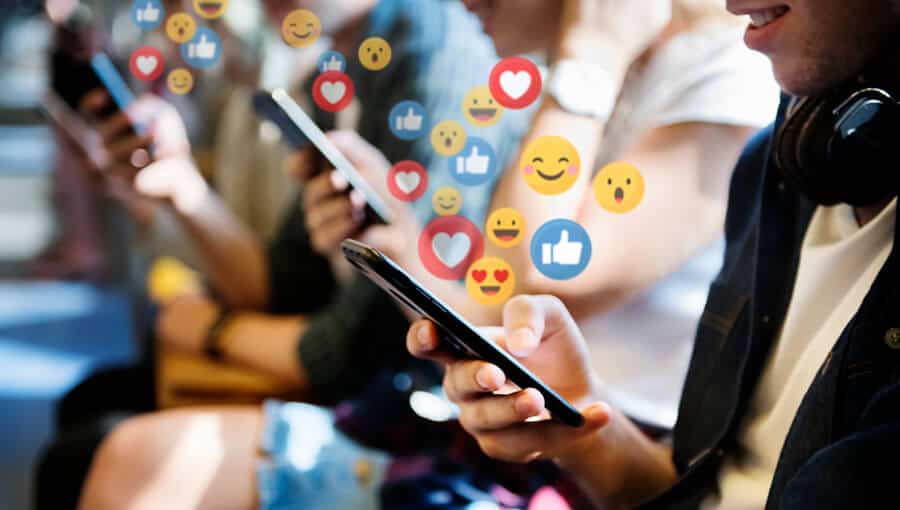Nowadays when one describes someone popular or well-settled, they may often bring into discussion their likes or general social media engagements. But, what’s the true impact behind this comparison based on social media successful presence?
How’s social exclusion, comparison to others, and social anxiety links to social media usage, how are these different when we are talking about young people, and how one can stay digitally aware?

These and more questions will be elaborated in this exclusive interview with Jacqueline Sperling, PhD, Instructor in Psychology at Harvard Medical School and the Director of Training and Research at the McLean Anxiety Mastery Program.
In her work, she is constantly hearing from young people suffering from social anxiety disorder, specific phobias, panic attacks, separation anxiety, agoraphobia, and obsessions and compulsions, and speaking from her experience, she elaborates to extent these conditions are affected by social media and why.
In this Youth Time interview, she elaborates some research supporting the fact that adolescents are more vulnerable to opinions by their peers and adjust their own perspectives to match the views of their peer majority.
Social Media, Depression and Anxiety
Initially, Dr Sperling asserts that social media sites may inadvertently be providing opportunities to reinforce or strengthen avoidance as children, who fear approaching people and/or certain situations outside of their home.
“They may feel less compelled to face their fears if they have ways to engage behind a screen in the comfort of their homes.”
She further explains how are low self-esteem, depression, anxiety, suicidal rates and comparison to others, linked to social media usage.
“Research has found that social media use has been associated with depression, anxiety, and low self-esteem (Keles, McCrae, & Grealish, 2019; Woods & Scott, 2016). Although the sites can create opportunities for teens to connect with each other, they also create a space for experiences of social comparison and exclusion.”
Specifically, users selectively share information about their lives and may be more inclined to share photos that portray them well and capture positive experiences.
“Others then may see how many ‘likes’ those photos receive and compare them to how many “likes” their own photos may have received.
“They also may compare their experiences to the ones others’ share and think that their own lives are not as positive even though the users posting those images may not be sharing the full picture. “
According to her, the posts also may provide evidence of social exclusion.
“If they see a photo of a group of friends together, then this person would know that they weren’t invited to that event. Before the use of social media, they would not have that information unless someone explicitly told them that. “
Mental Health of Young People
Understanding the younger generations are the biggest users of different social media platforms, does this necessarily mean they are the most threatened group as well?
Dr.Sperling answers these questions, while focusing on some specifics about mental health in young people.
“Due to adolescents’ stage of development, their peers play a bigger role in their lives. Therefore, information coming from their peers may have a bigger impact on them. Research has demonstrated that older adolescents compared to younger adolescents show a stronger sensitivity to ‘likes’ of photos and posts by peers on social media.”
However, she acknowledges that additional research is needed to determine whether that difference applies to adulthood, too.
“Research also has shown that adolescents are more vulnerable to opinions by their peers and adjust their own perspectives to match the views of their peer majority. This has been shown specifically in views about body image.
“Females in particular, and especially those with low self-esteem, were more susceptible to adjusting their beliefs about what is the ideal body image based on peers’ endorsements of thin images (Crone & Konijn, 2018).”
Reckoning that mental health is a very broad and delicate topic at the same time, Dr.Sperling, names the most important things to understand and apply when being challenged with mental health issues.
“Know that you are far from alone as mental health issues are very common. You also don’t have to go through the struggles alone. The way out is through, and mental health clinicians can be there to support you along the way.
“If you are wondering where to start to get help, ask your primary care provider about referral options.”
How Can We Stay Digitally Aware – Try This Behavioural Experiment
We would all probably agree that the world we live in today is almost unimaginable without social media – it is being used for various purposes, starting from fun to work and education opportunities.

So, how can one manage a proper, healthy use of social media and stay digitally aware? Dr. Sperling suggests that users find the right balance of social media use for themselves.
“One way to find what amount does not make your mood worse is to conduct a behavioural experiment. This can look like rating your mood on a scale from 1 to 10, with 10 being the most intensely one can experience an emotion, before logging on to social media and again after using it.
“Notice if after using social media if any unhappy emotions intensify. If so, repeat the same experiment the next day but with a smaller time frame until you determine what amount of time for using the sites works for you.”
She is of the opinion that this also may be worth exploring whether certain sites make you feel worse than others.
A Common Challenge Still Surrounded by Stigma
Despite how common mental health challenges are, especially right now, there still remains a stigma attached to them in society, she says.
“This may be in part due to a lack of awareness. Therefore, placing this important topic at the forefront of media sources and other educational resources, such as courses in schools, may make people feel less alone and more open to seeking support.”
Living in this area means taking care of a healthy co-existence with social media platforms, and for doing this the first step is understanding how to use them to improve our daily lives.
Photos: Shutterstock; From the archive of Jacqueline Sperling
Want to learn more about digital awareness? Read this:
Support us!
All your donations will be used to pay the magazine’s journalists and to support the ongoing costs of maintaining the site.
Share this post
Interested in co-operating with us?
We are open to co-operation from writers and businesses alike. You can reach us on our email at [email protected]/[email protected] and we will get back to you as quick as we can.










